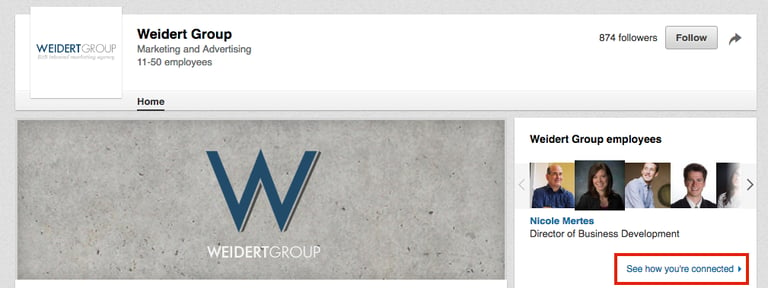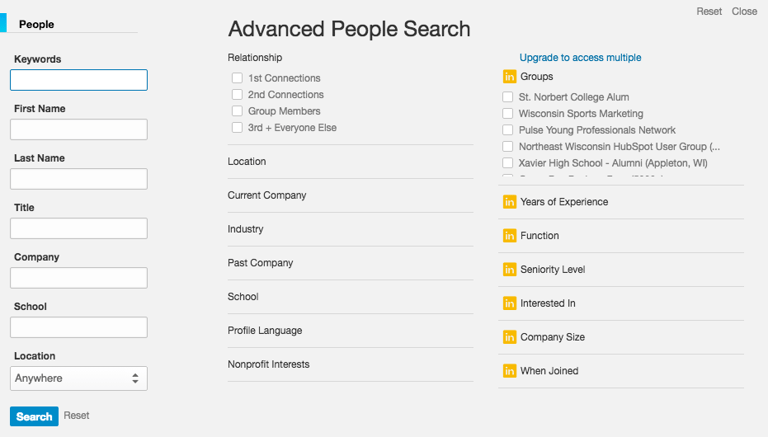How Wholesalers and Distributors Can Use LinkedIn for Prospecting
Written by
With more and more business being done completely online these days, it’s crucial that wholesalers and distributors have a strong online presence so you can find and connect with potential buyers before losing them to one of your competitors. It’s been found that 71% of B2B buyers start their purchase research with an anonymous online search, so a lot of times, the companies with the best online presence end up winning the majority of today’s sales.
Apart from just relying on your website to capture leads, however, one way that wholesalers and distributors can effectively connect with new prospects and find new sales opportunities is by using social media—particularly LinkedIn—to form 1-on-1 relationships with potential prospects and other industry experts. With over 400 million users and the most popular network for business professionals, you’re bound to find plenty of prospects who have an interest in your company’s offerings; it’s just up to you to find them, make a connection, and nurture them towards a sale.
To help you just do that, here are some of the ways wholesalers and distributors can use LinkedIn to generate new sales opportunities:
1. Create a Prospect Database
Before you even start reaching out to new prospects, you should always try to make the most of the ones you already have. LinkedIn allows you to export all of your connections’ names and email addresses in a .CSV file, which you can open and organize in Excel. Once you have all their information, you can comb through your list and send direct emails to any relevant connections, and nurture them from there. To start, just click here.
2. Invite Group Members to Connect
Now that you have a rough prospect database started, you’ll want to start adding to it. After all, the more connections you have, the more potential sales opportunities you’ll have, so don’t be shy when it comes to reaching out. Start by going through the LinkedIn Groups you’re involved in and send a connection request to other group members that you identify as good potential leads. Just make sure you include a personal note in your connection request, however, as people are much more likely to decline a generic request from a stranger, than a personalized one from someone they have something in common with.
3. Follow Company Pages
In addition to connecting with the other users in your Groups, another easy way to find prospects is by following the Company Pages of companies you see as good prospects. This way, you’ll stay up-to-date on all their company news, and you can even see a list of all the LinkedIn users who work for that particular company. And while I wouldn’t recommend just blindly adding every employee who works there, you can usually look at their job titles and descriptions to single out the buyers, researchers, and decision makers you want to be connected with. Just remember to send a personalized, non-creepy connection request, and you should be able to get your foot in the door with the people who matter most.

4. Use Advanced Search to Find Potential Prospects
If you don’t know which companies to target, but still want to find new prospects and connections, LinkedIn’s advanced search filters give you plenty of options to single out specific LinkedIn users. You can search for specific keywords in someone’s profile, their job title, location, industry, connection relationship, and even things like company size, seniority level, and experience if you have a Premium LinkedIn account. If you’re not sure where to start, look at your company’s buyer personas and go from there.

5. Send InMail
If you want to reach out to someone directly, but aren’t connected with them and don’t have their contact information, one way you can get ahold of them is by using LinkedIn’s InMail. With InMail, you can send a private message to any LinkedIn user for a small cost. If you have a Premium LinkedIn account, you can send several free InMail messages each month, but you can also pay to send them using a standard account. That being said, the biggest drawback with InMail is that users know it’s paid for, so you really have to provide something of value or offer a genuine conversation if you want their attention or conversions. Be straightforward and concise with your message so you don’t waste their time, and if you send them a link, send them something they’ll actually benefit from receiving—not just something you want more clicks and downloads on.
6. Designate an Official LinkedIn Rep
In addition to your salespeople having an active presence on LinkedIn, it’s also important that your Company Page regularly shares content and stays updated. The only thing is, someone has to be doing all that to make it happen! To help your company stay on top of all your LinkedIn activities, it’s important that you designate one person to be the official LinkedIn rep. This person will be in charge of posting any updates, replying to comments on the posts, and responding to any questions or proposals from prospects to the company. This way, there’s no confusion about who should respond to prospects, and your messaging will stay more consistent.
As more and more businesses conduct their sales and transactions completely online these days, your company’s ability to forge relationships with these online buyers will have a huge impact on your sales and success. LinkedIn is the #1 social network for business professionals, so make sure you’re connecting with these B2B buyers where they spend a lot of their time. Want to learn more about how other social networks can be used to generate leads and awareness for your brand? Download our free guide below.
Subscribe To Our Blog
Information. Insights. Ideas. Get notified every time a new Weidert Group blog article is published – subscribe now!
You May Also Like...

Content Marketing
SMEs Over SEO: AI-Proof Your B2B Content Strategy for 2025 | Weidert Group

Inbound Marketing
Building the Ultimate Lead-Generating Industrial Website: Essentials You Can’t Overlook

Manufacturing
Leveraging Digital Marketing for Manufacturers: 3 Real-World Success Stories
Accelerate Your Growth with
Weidert Group
If you’re ready to explore a partnership, request a personalized consultation with our team.

